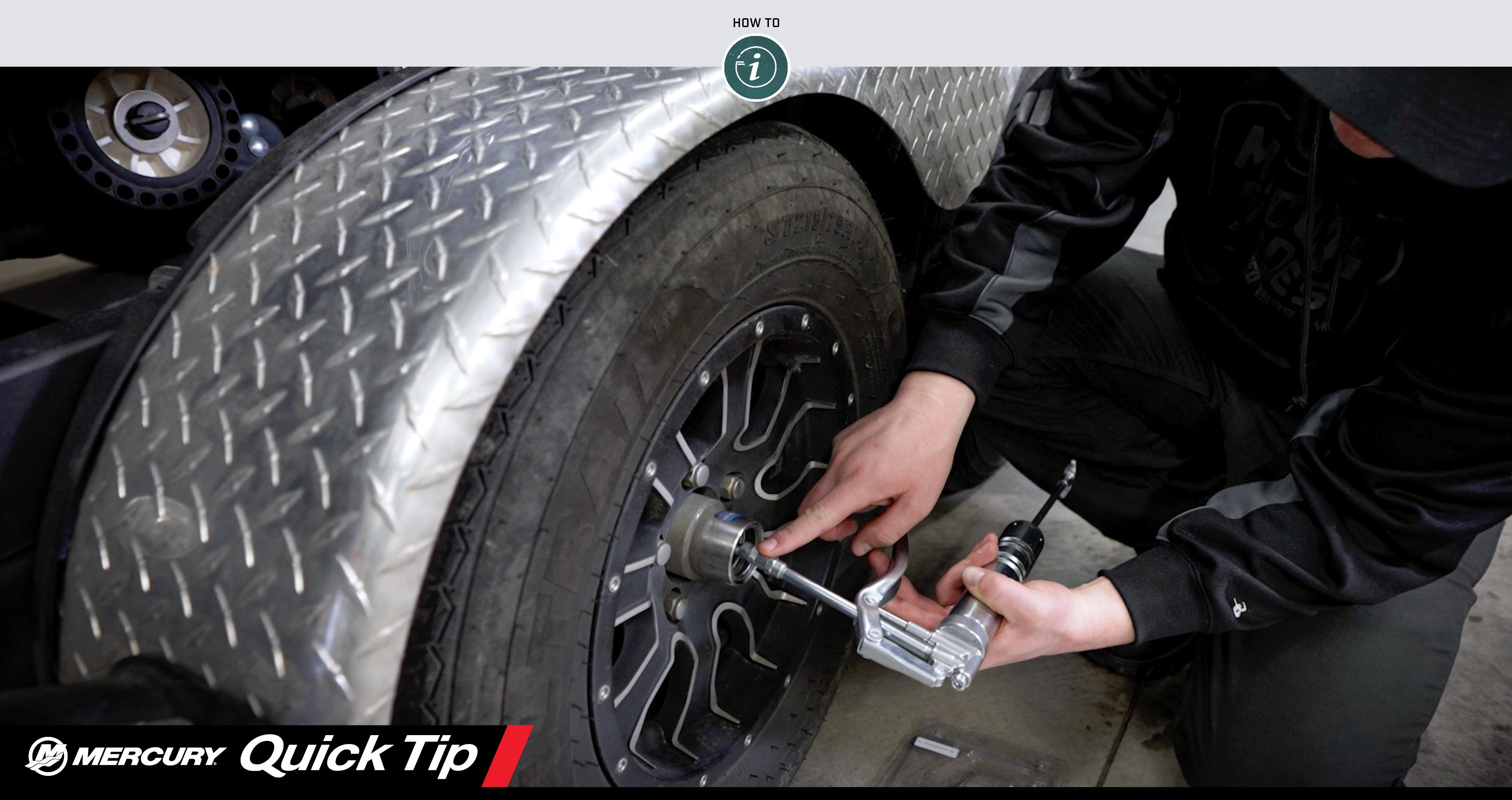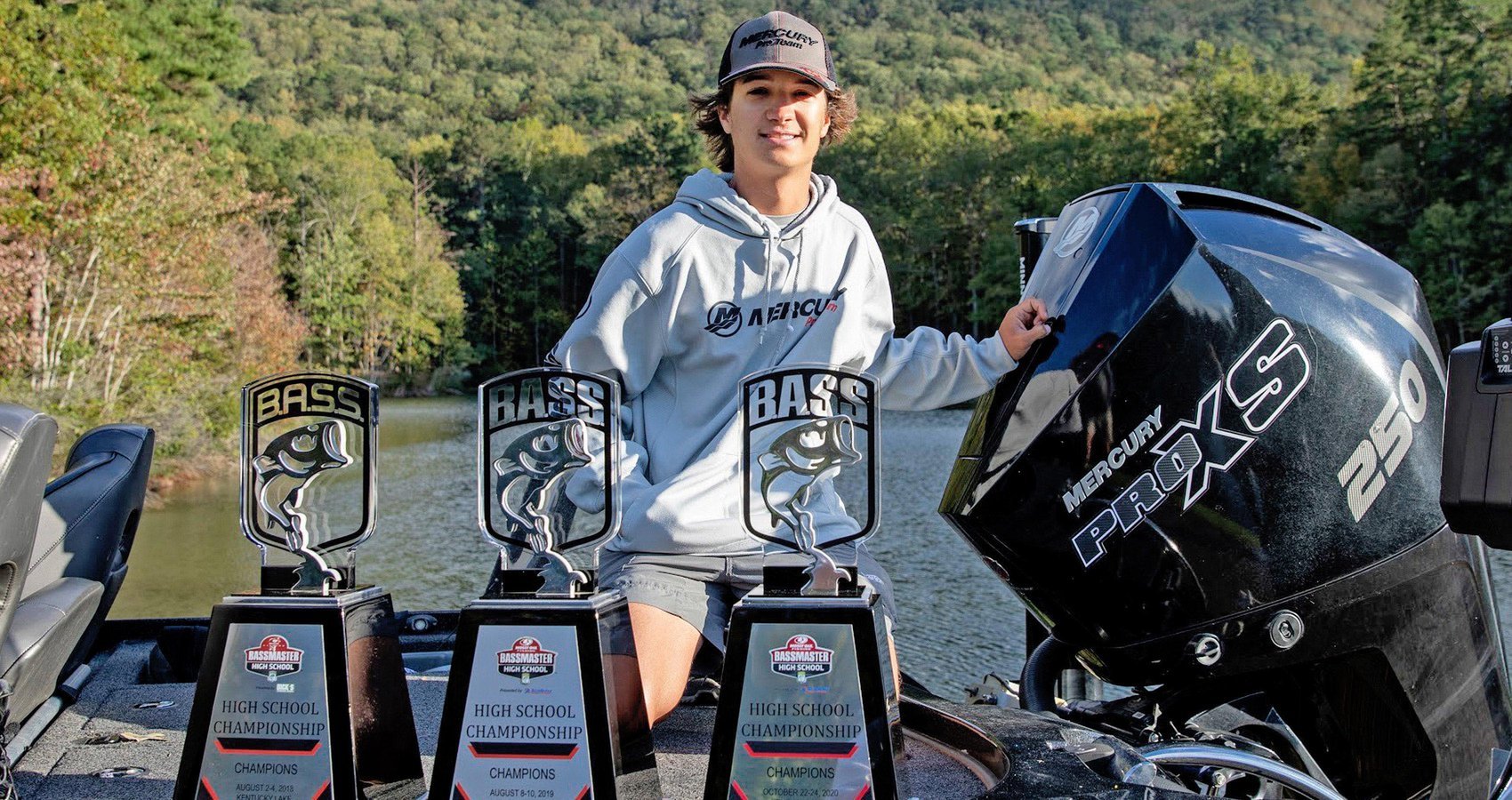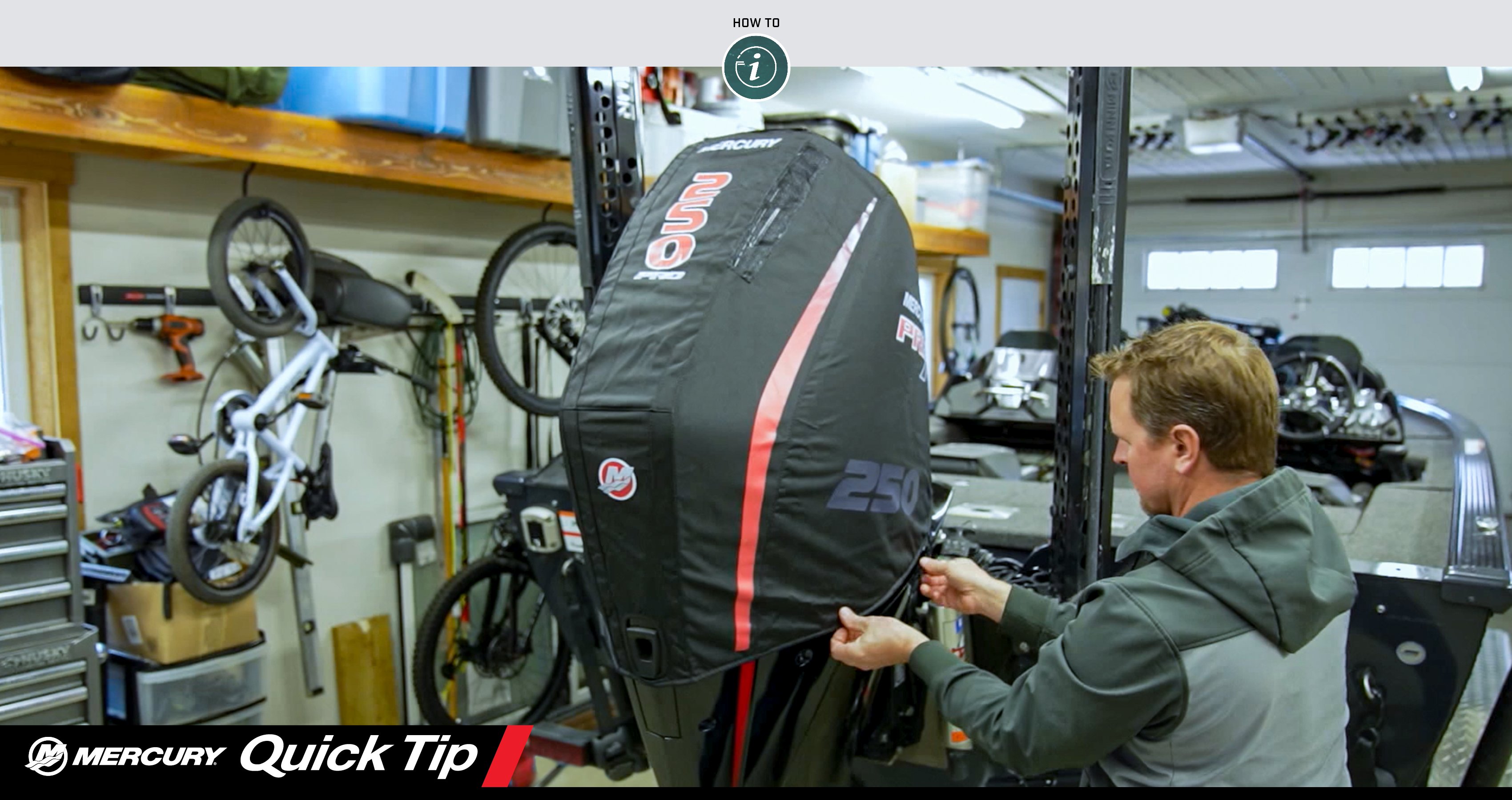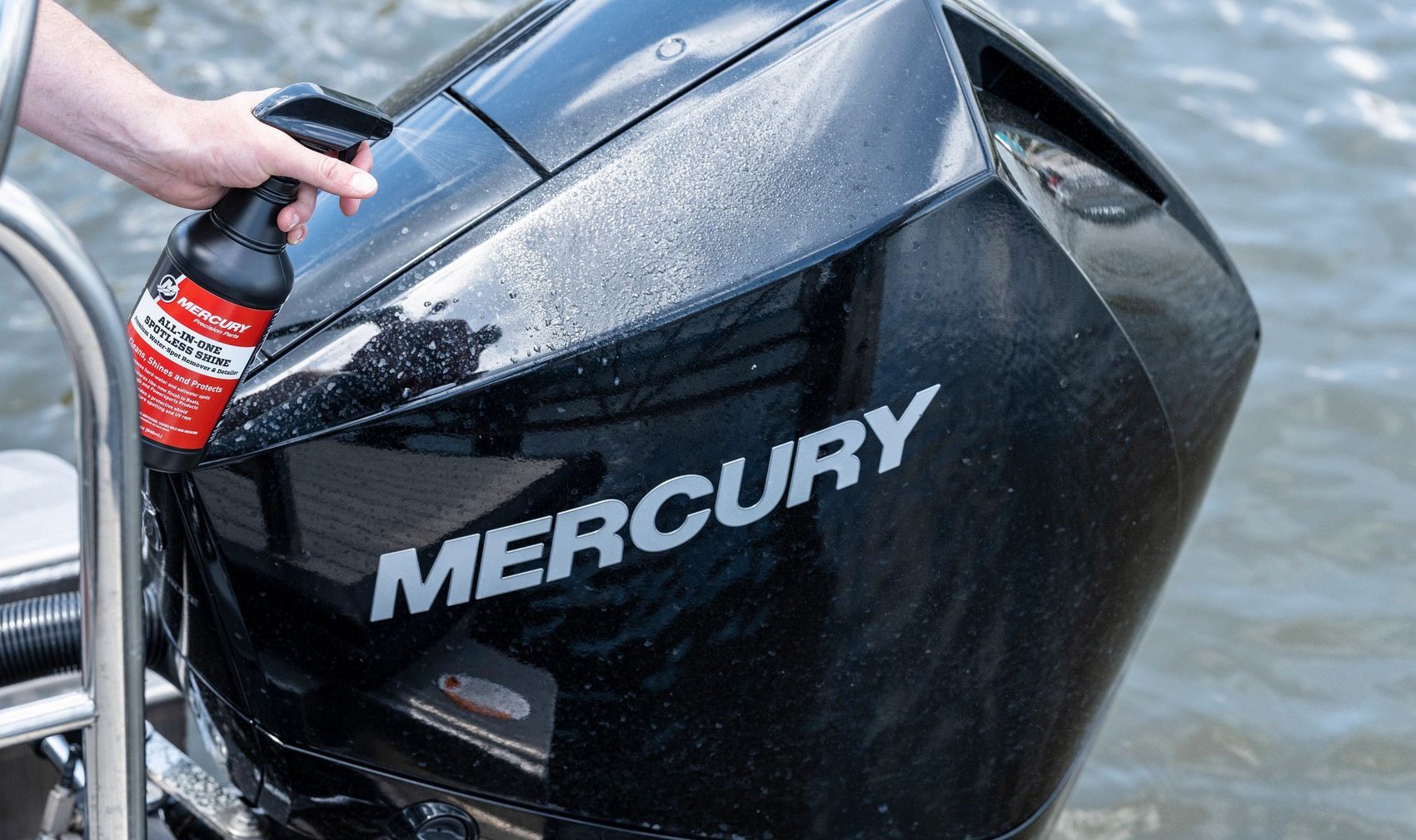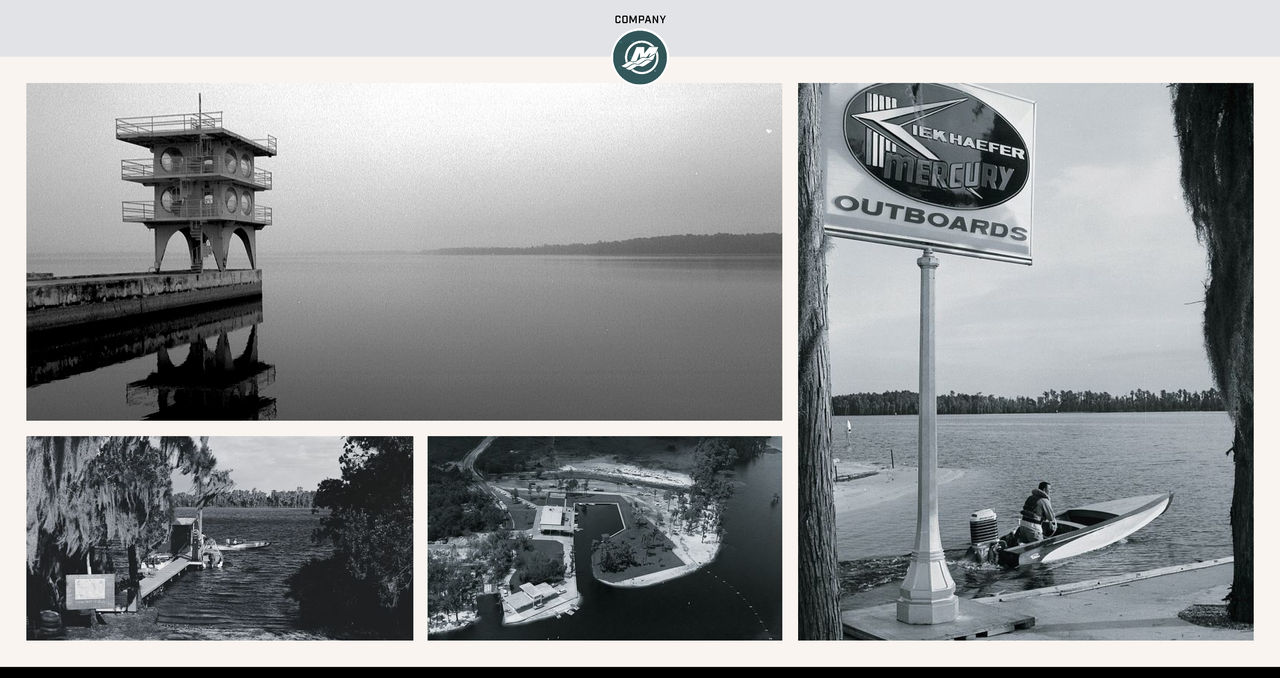Mercury Marine rigorously tests every new engine, propeller, part and accessory it manufactures. That has been a core part of the company’s DNA since it was founded by Carl Kiekhaefer back in 1939. While Mercury has state-of-the-art Product Development & Engineering (PD&E) testing labs in Fond du Lac and Oshkosh, Wisconsin, on-water testing also is essential to ensure the world-class performance, reliability and durability of all Mercury products. So, in the spring, summer and fall, members of Mercury’s PD&E team are a familiar sight on Lake Winnebago and other local bodies of water, running test boats in all kinds of weather.
But in the wintertime, on-water testing in Wisconsin is forced to stop. “The water gets hard really quick,” joked Steve Schoderer, product application engineer, product integration, who worked for Mercury Marine from 1971 to his retirement in 2015.
As the Mercury historians related in Lake X Marks the Spot, in 1957, Kiekhaefer visited Florida with the goal of finding a lake where his team could field-test engines and other products during the winter months. His solution was to lease the Lake Conlin in Osceola County. The lake’s central Florida location, surrounded by 10,000 acres of forest and swamp, was remote enough to allow Mercury to carry on extensive product testing and development in secret, which led to the nickname, “Lake X.”
“We could spend time testing away from the eyes of the competition,” Steve said.
Jack Litjens, who served as a Mercury test-boat driver from 1970 to 2004, when he was promoted to photo instrumentation engineer, recalled, “We would take winter trips from Fond du Lac to Florida and stay for two weeks, then go home for two weeks.” At Lake X, he added, the Mercury crew would stay at the hotel Carl Kiekhaefer had built on its shore. Kiekhaefer, who frequently visited by seaplane, landing on the lake, also had his crew build the iconic observation tower with its round, retro windows that still stands on the end of a concrete pier today.
“The closest town, St. Cloud, had no restaurants so Mr. Kiekhaefer built a cafeteria at Lake X to feed all the people on the base. They fed us three meals a day,” added John Litjens, Jack’s brother. John, who started working for Mercury Marine in 1968, began going to the lake for winter testing after transferring to the Hydrodynamics Department in 1972. “We performed a variety of tests, competitive engine performance tests, including gearcase development tests and propeller development tests. This also included impact tests, where we would submerge an oak log and made sure the gearcase would hit it on center.”
One of the most famous Lake X projects was an endurance trial named “Operation Atlas.” In the late 1950s, Kiekhaefer devised an “around the world” test for his engines. Two boats powered by Mercury 70hp Mark 75 outboards drove continuous circuits of the lake, day and night, until they had completed 25,003 miles – the length of the Earth’s circumference. To refuel, a second boat equipped with a gravity-feed gas tank would pull up next to the test boat and fill it up “on the fly”. They changed drivers the same way. Operation Atlas lasted 34 and a half days.
“It proved that ‘Mercury engines were fast and would last,’” Steve said.
While not quite as epic, freshwater endurance trials continued at Lake X during the Litjens brothers’ time there. A dedicated team in the observation tower would time every lap, 24 hours a day, John reported. “The boats had headlights and taillights. You could put 300 to 400 hours on an engine in a matter of a few weeks,’” he said.
The endurance trials were monotonous, but occasionally the drivers would have a bit of fun. “If you were staying overnight at the lake, they liked to cut close to the hotel and splash the windows you were sleeping next to,” John said.
Over the years, many boat builders and race boat teams powered by Mercury and Mercury Racing engines were invited to the lake to test their new boats and optimize the ride and performance with the help of the Mercury team. Like Kiekhaefer, they appreciated the fact that they could do this in a private setting out of sight of competitors. In fact, there was a coveted decal that read, “Dialed in at Lake X.”
For example, Jack recalled that Stroker Boats’ Founder Charles “Chub” Bryant was among the manufacturers who brought their boats to Lake X. “Along with changing gearcases, we also tested many of our finest props. We then changed engines from the 225 Pro Max to the 300. We spent considerable time ‘dialing in’ his boat,” Jack said.
Lake X also is the site where Mercury tested many “world firsts”, starting with the very first V6 outboard, known as the “Black Max.”
“Back in 1974, I was the test pilot for the Black Max in a Hydra-Sports bass boat. In those days, if you were going 60, you were really hauling the mail. We went 76 miles an hour,” Jack said.
A decade and half later, Mercury Marine was selected to manufacture the 1990 LT-5 small-block V8 engine for General Motor’s Chevrolet Corvette line at the MerCruiser plant in Stillwater, Oklahoma. The next year, Mercury engineers marinized one of the LT-5 engines and installed it in a custom 24-foot Baja performance boat. Nicknamed the “Wette Vette”, the Baja and its Corvette ZR-1 “tow vehicle”, which was painted to match the boat, were trailered to Lake X for a press event, creating a sensation. The journalists, of which this writer was one, were invited to drive the boat on the lake and the car on the road leading up to it.
“While it was hard work being a Mercury test driver or engineer at Lake X, it also was rewarding,” said John, who was named Lake X Operations Manager in 1996 and worked for Mercury for more than 49 years overall. “It was the best job anyone could want to do; we learned so much about engines, boats and the industry. In all those years, I earned 10 U.S. patents, of which I am very proud.”
In 1984, Mercury Marine sold Lake X to Kenneth Kirchman, who turned it into a 10,426-acre nature preserve, the Kenneth Kirchman Foundation. Its mission is to educate the public about Florida’s ecology and wildlife. Mercury is a partner in that endeavor.
For 33 years, Mercury focused on testing products at its other facilities, including the new “X-Site”, which the company opened in Florida’s Panhandle in 2004. Then, in 2017, Mercury returned to Lake X with a long term lease from the Kirchman Foundation. Mercury has continued the tradition of testing new technology on the lake, executing R&D tasks specific to new product development, and working closely with boat builders on set up and optimization of their new models
In addition, the company occasionally invites the media back to Lake X for press events. The most recent one took place in February 2021, when the world’s first V12 outboard, the 600hp Verado®, was launched.
The journalists were highly impressed. Boating magazine Editor in Chief Kevin Falvey wrote:
“We believe this new Mercury engine will change the landscape of large outboard boats. With dual contra-rotating propellers, a steerable gearcase, a two-speed transmission, 7.6 liters of displacement and 12 cylinders arranged vertically, the V12 -600 provides thrilling performance with smoother and quieter operation than any other large outboard engine we’ve run.”
Lake X truly is a lake of legends.
